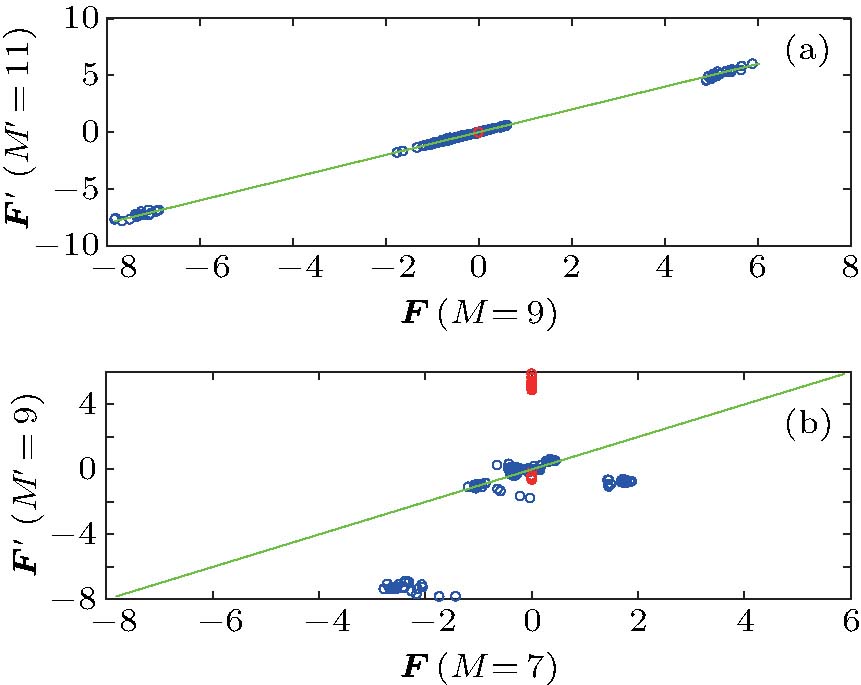|
(color online) (a) and (b) Parameters reconstructed with 2 different truncations
M
′
s
(vertical lines) plotted against those reconstructed by M truncation adopted in Eq. (11).
M
′
>
M
(
M
′
=
11
,
Z
M
′
=
(
θ
˙
,
cos
(
ω
t
)
,
sin
(
ω
t
)
,
cos
(
θ
)
,
sin
(
θ
)
,
cos
(
2
θ
)
,
sin
(
2
θ
)
,
cos
(
3
θ
)
,
sin
(
3
θ
)
,
cos
(
6
θ
)
,
sin
(
6
θ
)
)
,
F
=
(
F
1
,
F
2
,
F
3
,
F
4
,
F
5
,
F
6
,
F
7
,
F
8
,
F
9
,
F
10
,
F
11
)
)
and
M
′
includes all M parameters of Eq. (11), all dots are around the diagonal line and all parameters not included in the M of Eq. (11) bases are nearly zero (red circles), justifying the sufficiency of truncation of Eq. (11). (b) The same as panel (a) with two terms of
cos
(
2
θ
)
,
sin
(
2
θ
)
in Eq. (11) deleted (M = 7,
Z
M
=
(
θ
˙
,
cos
(
ω
t
)
,
sin
(
ω
t
)
,
cos
(
θ
)
,
sin
(
θ
)
,
cos
(
3
θ
)
,
sin
(
3
θ
)
)
,
F
=
(
F
1
, F2, F3, F4, F5, F6,
F
7
)
. Dots distribute considerably away from the diagonal line, concluding such truncation of M = 7 not suitable.
|

